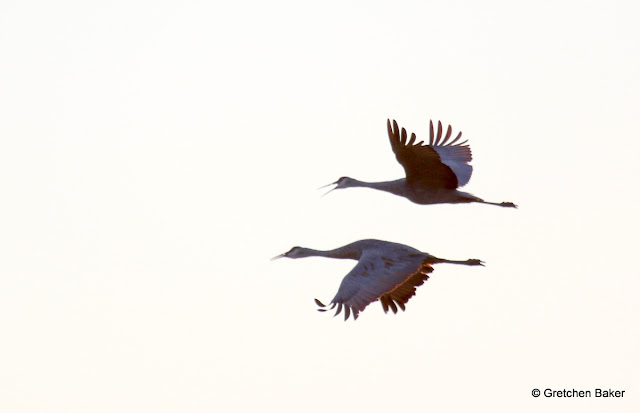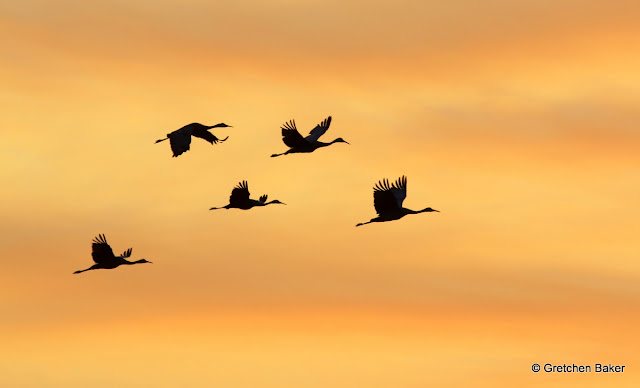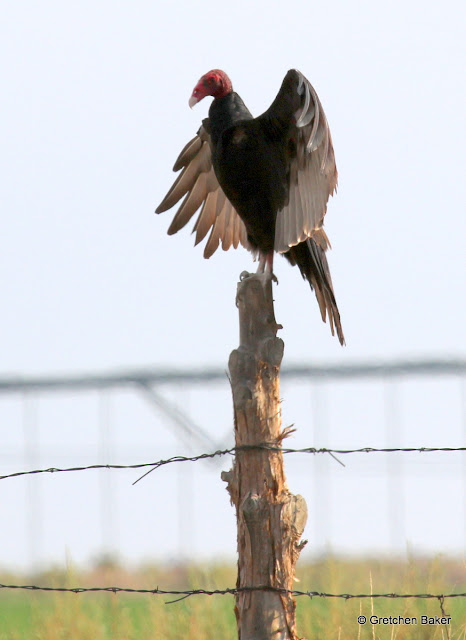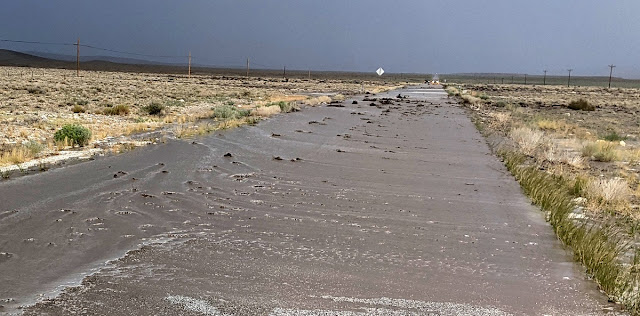I've had a lot of fun photographing wildlife on the ranch at sunrise and sunset this month. Here are some of the photos. One day I was surprised to find a Great Blue Heron up on the pivot. Was this something new? I asked my husband, and he said that it was the first time he had seen it up there. I positioned myself to get Notch Peak in the background, love that distinctive mountain!
Here are deer eating the cut alfalfa. What? Are they too lazy to eat the tall alfalfa? Maybe they just like cut salad!
Sandhill cranes are migrating through, and I just love seeing and hearing them.
A closeup of them flying.
The geese are also arriving. (Do you see the Great Blue Heron in the background on the pivot?)
One morning I could just tell that the clouds were going to make for a special sunrise. They didn't disappoint!
Hooray, the sandhill cranes also flew with the cloud bands as a background.
I went to a little pond and enjoyed watching this western sandpiper looking for food. It probably didn't even realize what a nice reflection it was making.
Also in the reflection were the nearby mountains. I was feeling like I was in heaven, such beautiful scenery.
Although I get most excited about birds and colorful skies, I'll stop and take a photo of some deer once in a while. ;)
For autumn equinox, I went out to the Baker Archaeological Site. This Fremont village was inhabited from about 1220 to 1295, and it's thought they may have oriented the buildings to help tell them when it was time to plant and harvest based on sun position when rising and setting. While I was waiting for the sun to rise, I turned in the opposite direction and saw a big beautiful moon over the Snake Range. I zoomed in for a close view.
A little bit later, the first sun rays were lighting up Doso Doyabi, including the colorful aspens and the heart of the mountain.
When I turned back in the other direction, I decided for an artistic shot, with a trail sign, modeled on a slate artifact found at the site. The "owl" may have been modeled on the eastern mountains, which with two rounded wings and two pointy ears looks like an owl (or a bat).
Here's the view of the owl/bat in the mountains with some sandhill cranes on a different morning.
I like when I can get more than one species in a photo. Here are sandhill cranes in the sky (with Notch Peak behind) and deer and a raven in the field.
The sandhill cranes hopping (with a raven in the background) made for some fun watching.
The cranes don't pay any attention to the mule deer strolling by.
One evening we went for a family drive and observed this beautiful Cooper's Hawk. Well, it's beautiful if it's far away from my chickens!
This mule deer checked us out from the field, with a hay barn in the distance.
Then we saw pronghorn, a whole lot of them.
The patterns when they stopped and looked at us were mesmerizing.
This pronghorn buck had an attitude.
On the other side of the vehicle were more deer in the field, including several bucks.
This was a strange nontypical buck. My husband says it's called a moss head.
Here are some sandhill cranes strutting their stuff.
And finally, a good morning shot.
Hope you've enjoyed these photos of life on the ranch!






































































